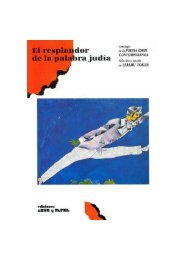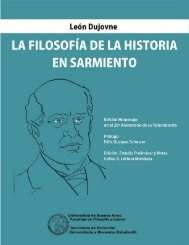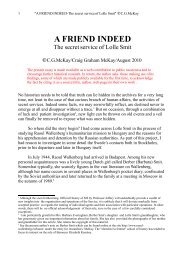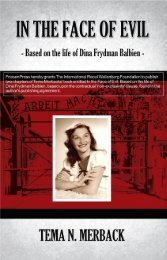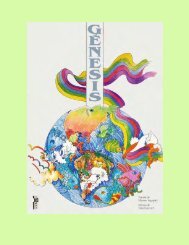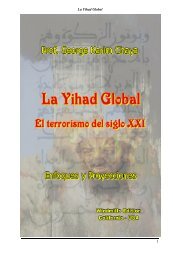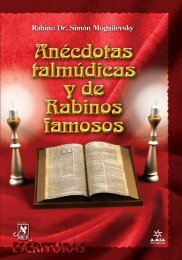Speaking to One Another - The International Raoul Wallenberg ...
Speaking to One Another - The International Raoul Wallenberg ...
Speaking to One Another - The International Raoul Wallenberg ...
- No tags were found...
Create successful ePaper yourself
Turn your PDF publications into a flip-book with our unique Google optimized e-Paper software.
Ritualization of Past MemoriesIt is hard <strong>to</strong> estimate the exact number of Armenians comprising 97 percent of the population of the Republicof Armenia who are directly related <strong>to</strong> Western Armenia and have family or personal memoriesrelated <strong>to</strong> Turkey and Turks. In addition <strong>to</strong> Armenians (mostly from Van, Kars, Sasoun, Moush and Bitlis)that survived massacres led by Young Turks and moved <strong>to</strong> Eastern Armenia, which was under Russianrule, some Armenian refugees who previously escaped <strong>to</strong> other countries (Iraq, Lebanon, Syria,Egypt, Iran, Greece, Bulgaria, Romania, France, Argentine etc.) later on in the twenties, forties and sixties,settled in Armenia in several waves, bringing with them particular s<strong>to</strong>ries of their families. <strong>The</strong>sewere survivors and their descendants from Western and Southern Turkey, particularly from Adana, Sebastia,Marash, Kesaria etc. <strong>The</strong>y were not only the bearers of memories of massacres that <strong>to</strong>ok place inTurkey, but they were also breeding the environment for those memories and feelings.<strong>The</strong> family s<strong>to</strong>ries of those who managed <strong>to</strong> escape the massacres have penetrated in<strong>to</strong> the families representingthe native population of Eastern Armenia, currently the Republic of Armenia. <strong>The</strong> ways of “penetration”were various. First of all, most of the initial survivors who managed <strong>to</strong> escape <strong>to</strong> Eastern Armenia livedin the houses of locals or in constructions adjacent <strong>to</strong> them thus making their hosts witness their grief,their sorrow, their feelings and memories. Second, these s<strong>to</strong>ries “penetrated” through marriages, as wellas through neighborly and work relationships between the survivors’ descendants and locals. Actually,there are few people in the Republic of Armenia that would not be able <strong>to</strong> tell a specific s<strong>to</strong>ry aboutthe events of 1915-1922: “Of the entire family of my daughter-in-law’s grandfather, he was the only one<strong>to</strong> survive” (and then follows the s<strong>to</strong>ry of rescue). “<strong>The</strong> aunt of my uncle’s granddaughter’s husband escapedfrom the harem of one of the Turkish Beks...”. “<strong>The</strong> neighbor of our neighbor’s grandfather threwhim over his shoulder and carried him home....”; “My co-worker’s grandfather was raised in an Americanorphanage and until the end of his life he could not forget how his parents were slaughtered in front ofhim”... S<strong>to</strong>ries starting with such introductions could be found everywhere.Similar memories have the descendants of those Yezidis and their families who <strong>to</strong>gether with Armenianssurvived the Turkish massacres in1915-20 . . It is safe <strong>to</strong> say that the majority of Armenia’s currentpopulation is the bearer of such “memories”.In addition <strong>to</strong> this, there are regions in the Republic of Armenia, which are densely populated with peoplebearing and living with such family memories: there are entire villages and urban districts, wheresurvivors and those who moved <strong>to</strong> Armenia after extended wandering live <strong>to</strong>gether. Current villages insome regions of the Republic of Armenia such as Talin, Kotayk, Armavir, Vardenis and many villages of91







